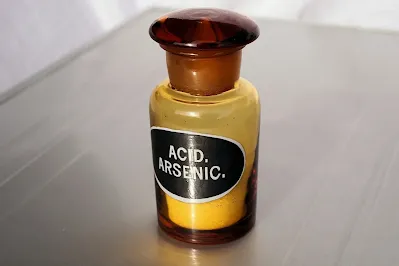"Risks of Alphabetical Chemical Storage: Potential Dangers and Drawbacks"

Guidepost to Explore
2. The Basics of Alphabetical Chemical Storage.
3. The Risks of Alphabetical Chemical Storage.
- Incompatibility Risks.
- Chemical Spills and Accidents.
- Fire Hazards.
- Limited Accessibility.
- Reduced Efficiency.
- Increased Costs.
- Segregation of Chemicals.
- Labelling and Color-Coding.
- Proper Storage Containers.
- Inventory Management.
6. Conclusion.
7. FAQs.

1. Introduction
Chemicals are an indispensable part of modern life, being used in various industries such as manufacturing, agriculture, medicine, and research. However, their safe handling & storage can be quite challenging as they can pose significant risks if not managed appropriately. Although alphabetical chemical storage might seem like a simple & convenient way to store chemicals, it can result in potential hazards & drawbacks that endanger individuals, the environment, and property. This blog will delve into the associated risks of this storage method & suggest safer alternatives for storing chemicals.

2. The Basics of Alphabetical Chemical Storage
Alphabetical chemical storage involves organizing chemicals based on their names' first letter, such that chemicals with names starting with the same letter are stored together. This approach is easy to use, requires no specialized knowledge or training, and allows for easy identification of chemicals.
However, this method overlooks other essential considerations such as chemical compatibility, potential hazards, and storage conditions. As a result, it could lead to severe consequences such as accidents, spills, and fires, as well as increase costs, reduce efficiency, and limit accessibility.

3. The Risks of Alphabetical Chemical Storage
-min.webp)
- Incompatibility Risks
Chemicals can react with each other in various ways, leading to dangerous situations such as fires, explosions, and the release of toxic gases. When chemicals are stored alphabetically, there is a high likelihood that incompatible chemicals are stored close to each other. For instance, strong oxidizers such as hydrogen peroxide or perchloric acid should not be stored with reducing agents such as sodium hydrosulfite or sodium borohydride. Storing these chemicals together can result in a hazardous reaction that could cause an explosion, fire, or toxic gas release.
- Chemical Spills and Accidents
Improper storage & handling of chemicals can lead to spills & accidents that could harm individuals, property, and the environment. When chemicals are stored alphabetically, there is a possibility that the chemicals are not properly segregated, increasing the likelihood of spills or accidents. For example, storing acids & bases together could lead to a chemical reaction that could cause burns, corrosion, and release of toxic gases.
- Fire Hazards
Many chemicals are flammable or combustible and can ignite when exposed to a heat source or an ignition source. Storing flammable chemicals near heat sources or ignition sources could lead to a fire hazard. Additionally, storing incompatible chemicals together could cause a fire or explosion, leading to severe consequences such as property damage, injuries, or fatalities.
4. The Drawbacks of Alphabetical Chemical Storage
.webp)
- Limited Accessibility
When chemicals are stored alphabetically, it may be challenging to find specific chemicals quickly, especially when dealing with a large inventory. This could lead to delays in research or manufacturing processes, affecting productivity & efficiency.
.webp)
- Reduced Efficiency
Alphabetical chemical storage may not be the most efficient method, especially for research or manufacturing processes that require quick & easy access to multiple chemicals. In such cases, it may be more efficient to store chemicals based on their frequency of use, proximity to workstations, or storage conditions. This method ensures that frequently used chemicals are easily accessible, reducing delays & increasing productivity.

- Increased Costs
Alphabetical chemical storage could result in increased costs, especially if the inventory is large or if chemicals are stored inefficiently. For instance, if incompatible chemicals are stored together, they may need to be replaced regularly, leading to additional costs. Additionally, if chemicals are stored in non-standard containers or not properly labelled, they may need to be discarded, leading to additional expenses.
5. Best Practices for Chemical Storage
To mitigate the risks associated with alphabetical chemical storage, it is essential to implement best practices for chemical storage. These practices include:
- Segregation of Chemicals
Chemicals should be stored based on their compatibility, toxicity, and hazard class. This ensures that incompatible chemicals are not stored together, reducing the likelihood of accidents or spills. Additionally, it is essential to segregate chemicals based on their storage conditions, such as temperature or humidity requirements.
- Labelling and Color-Coding
All chemicals should be labelled with their contents, hazard warnings, and storage requirements. Additionally, color coding can be used to distinguish between different hazard classes, increasing the visibility of potential hazards.
- Proper Storage Containers
To prevent any chemical reactions, corrosion or leakage, it is important to store chemicals in appropriate containers that are compatible with their contents. The containers should also be sealed properly, labelled clearly, and stored in designated areas.
- Inventory Management
It is essential to maintain an accurate inventory of all chemicals, including their location, quantity, and expiration date. This ensures that chemicals are used before their expiration date, reducing the likelihood of accidents or spills.
6. Conclusion
Alphabetical chemical storage is a convenient but risky method of storing chemicals. The risks associated with this method include incompatibility, spills & accidents, and fire hazards. Additionally, this method has drawbacks such as limited accessibility, reduced efficiency, and increased costs. To mitigate these risks, it is essential to implement best practices for chemical storage, such as segregation, labelling, proper storage containers, and inventory management.
7. FAQs

Q: What is alphabetical chemical storage?
A: Alphabetical chemical storage involves organizing chemicals based on their names' first letter, such that chemicals with names starting with the same letter are stored together.
Q: What are the risks of alphabetical chemical storage?
A: The risks of alphabetical chemical storage include incompatibility, spills & accidents, and fire hazards.
Q: What steps can be taken to reduce the risks of chemical storage?
A: To minimize the risks associated with storing chemicals, it's crucial to follow recommended procedures for storage, including segregating chemicals by hazard class, labelling containers clearly, using appropriate storage containers, and managing inventory effectively.
Q: What are the benefits of proper chemical storage?
A: Proper chemical storage ensures the safety of individuals, property, and the environment, reduces the likelihood of accidents or spills, and increases productivity & efficiency.
Q: Why is inventory management important in chemical storage?
A: Inventory management ensures that chemicals are used before their expiration date, reducing the likelihood of accidents or spills, and helping to maintain an accurate inventory of all chemicals.
Q: Is alphabetical chemical storage illegal?
A: No, alphabetical chemical storage is not illegal, but it is not a recommended storage method due to the potential risks & drawbacks.
Q: What are the alternatives to alphabetical chemical storage?
A: Alternatives to alphabetical chemical storage include storing chemicals based on their frequency of use, storage conditions, or proximity to workstations.
Q: Can I store different types of chemicals in the same container?
A: No, different types of chemicals should never be stored in the same container, as this could lead to chemical reactions or fires.
Q: What is the maximum shelf life for chemicals?
A: The maximum shelf life for chemicals varies depending on the chemical and its storage conditions. It is essential to check the label and follow the manufacturer's instructions.
Q: Can expired chemicals be used?
A: Expired chemicals should never be used, as they may have lost their effectiveness, become unstable, or pose a safety risk.
Q: How should I dispose of chemicals?
A: Chemicals should be disposed of according to local regulations and guidelines. This may involve special disposal procedures, such as recycling or hazardous waste disposal.
Q: Can I store chemicals on the floor?
A: No, chemicals should never be stored on the floor, as they could be knocked over or damaged. Instead, chemicals should be stored on shelves or other designated storage areas.
Q: Should I wear protective equipment when handling chemicals?
A: Yes, it is essential to wear appropriate personal protective equipment (PPE) when handling chemicals, including gloves, goggles, and protective clothing.
Q: Is it safe to store chemicals together with other materials?
A: To minimize the risk of accidents or contamination, it's advisable to store chemicals in a designated storage area that's separate from other materials.
Q: Can I store chemicals in plastic containers?
A: Plastic containers can be used to store some chemicals, but it is important to ensure that the container is compatible with the chemical and resistant to chemical reactions, corrosion, or leakage.
Q: Can I mix chemicals to save space?
A: No, chemicals should never be mixed to save space, as this could lead to chemical reactions or fires.
Q: What should I do if a chemical spill occurs?
A: If a chemical spill occurs, it is essential to follow the appropriate spill response procedures, including evacuating the area, notifying others, containing the spill, and cleaning up the area.
Q: Can I store chemicals in the same cabinet as other items?
A: No, chemicals should be stored in a designated storage area, separate from other items, to reduce the likelihood of accidents or contamination.
Q: How often should I check my chemical inventory?
A: It is recommended to check your chemical inventory regularly, at least once a year, and to update it whenever new chemicals are added or old ones are used.
Q: Can I dispose of chemicals in the regular trash?
A: No, chemicals should never be disposed of in the regular trash, as they could pose a safety risk. Instead, they should be disposed of according to local regulations & guidelines.


-min.webp)
-min.webp)
-min.webp)




-min.webp)

-min.webp)



